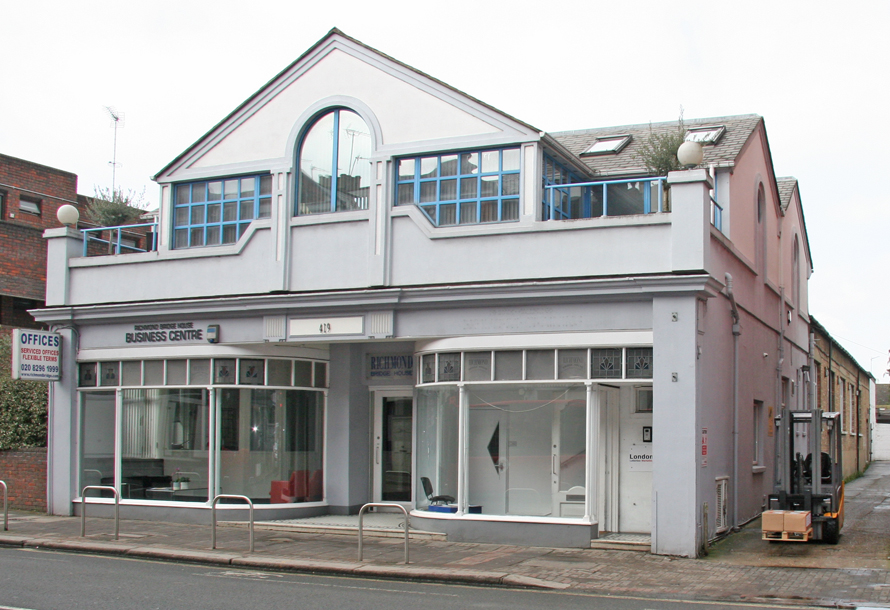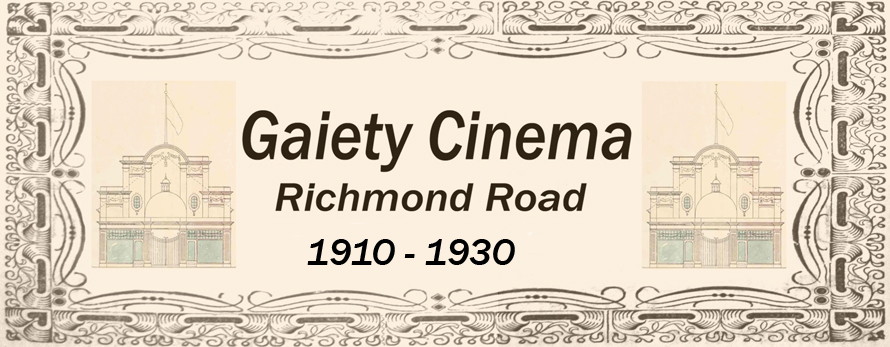
To the best of our knowledge no official history has been written on this small cinema located near Richmond Bridge in East Twickenham.
The building still exists present day but ceased to be a cinema in 1930.
The following details have been sourced from various places which include local newspaper advertisements and local directories.
The owners of the cinemas are shown where known. Quite often listings show the proprietor or the manager but they may not necessarily be the owner.
1910 Proposed Picture Theatre East Twickenham
The first plans for a picture house in East Twickenham were conceived by the newly formed Surrey and Sussex Picture Palaces Ltd who had purchased the site of the former Spring Lodge in Richmond Road which had recently been demolished.
Surrey and Sussex Picture Palaces had already opened two theatres in Kingston and Merton. The Richmond Road site was to be the third but the company grew too quickly and got into financial difficulties which resulted in them selling of all their assets
Unfortunately for Twickenham the picture house had only been partly built at the time Surrey and Sussex Picture Palaces ceased to exist. The original building plans by architect Walter Charles Phillips of Kingston (see below) show an elaborate entrance foyer to the theatre which was never built.
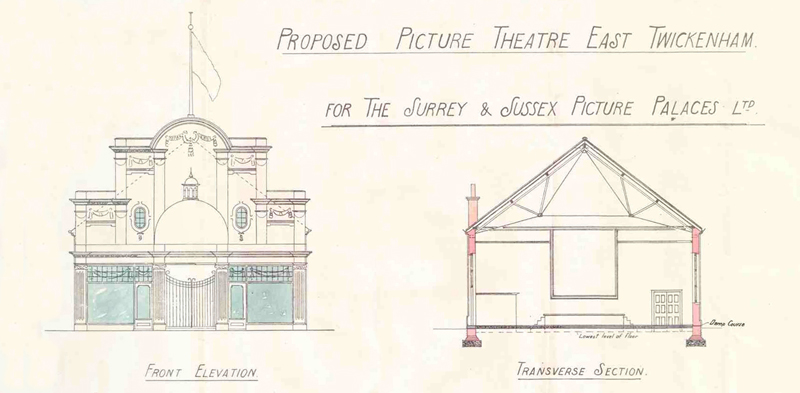
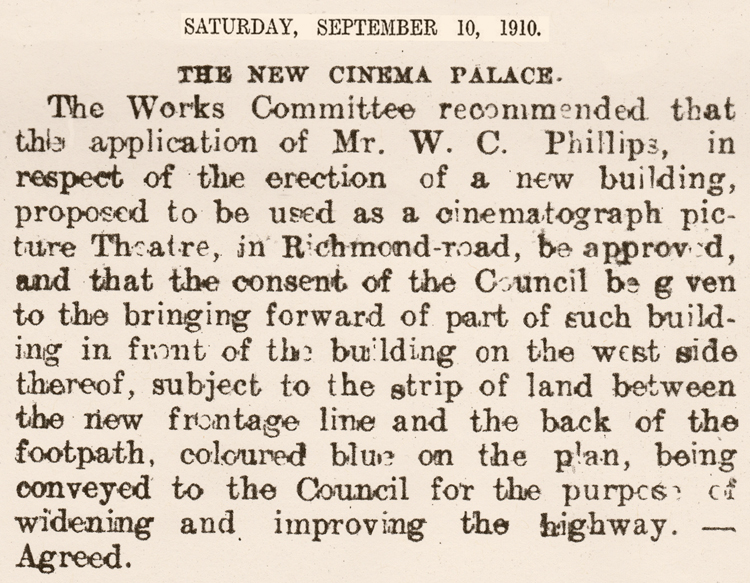
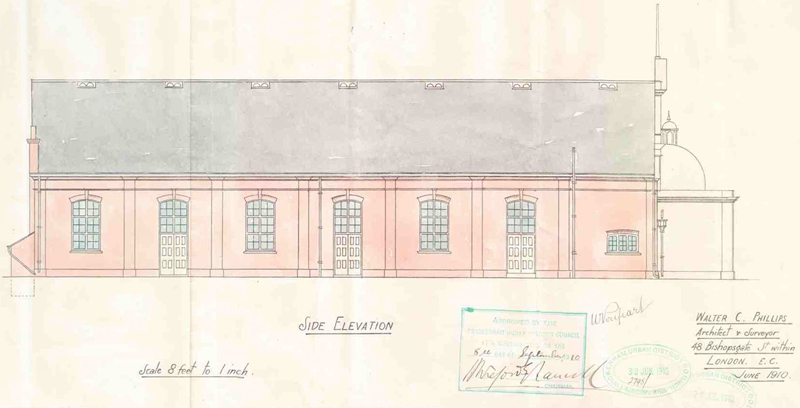
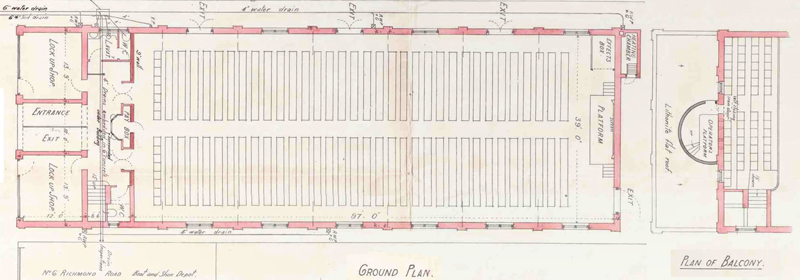
1912 opening of Gaiety Picture Playhouse
A new owner of the partly constructed picture house had been found by 1911 and a new architect Mr Clarke Ashworth of Richmond had been commissioned to finish the theatre. The Gaiety Picture Playhouse opened on Saturday 2nd March 1912.
The press articles below show that the management is under the direction of Mr L Courlander who is also associated with nearby Castle Theatre in Richmond.
He was the manager of The Castle Cine Syndicate which ran the Richmond property
and also the Gaiety.
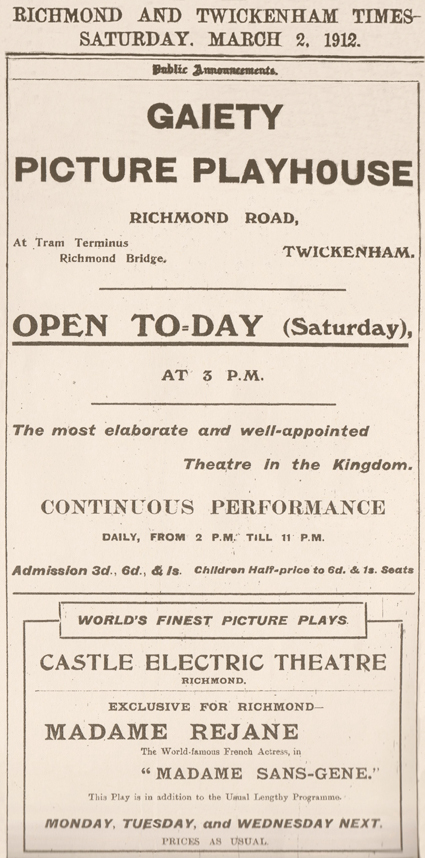
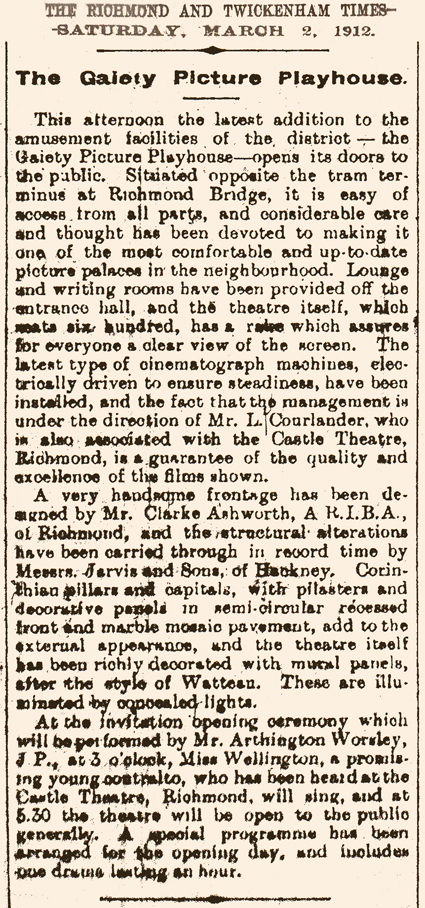
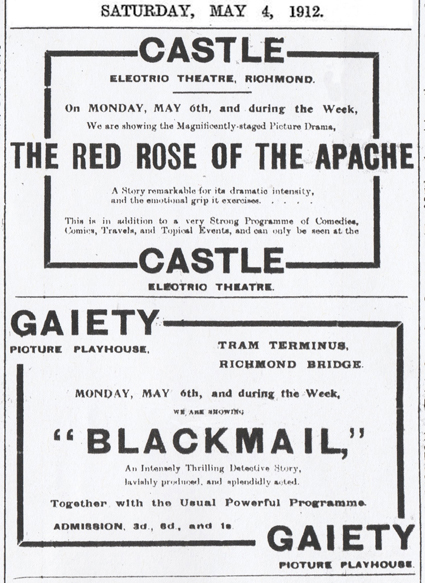
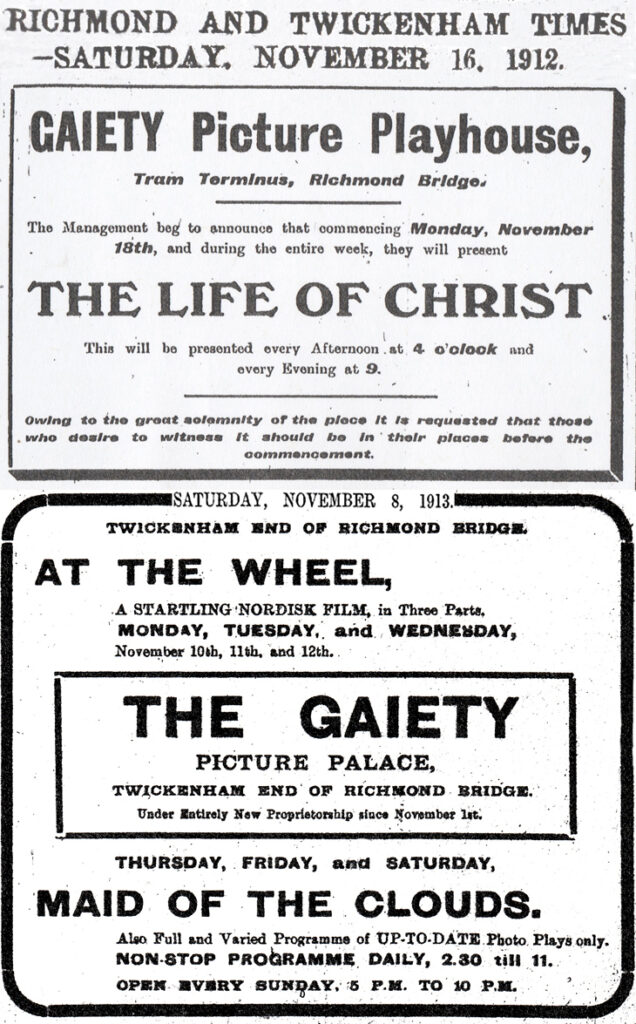
The Gaiety Picture Playhouse had changed it’s name in November 1913 to The Gaiety Picture Palace.
The photo and map below show the location in Richmond Road of the Gaiety.
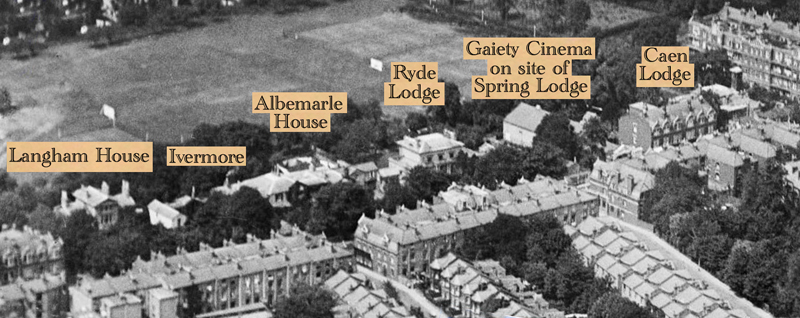
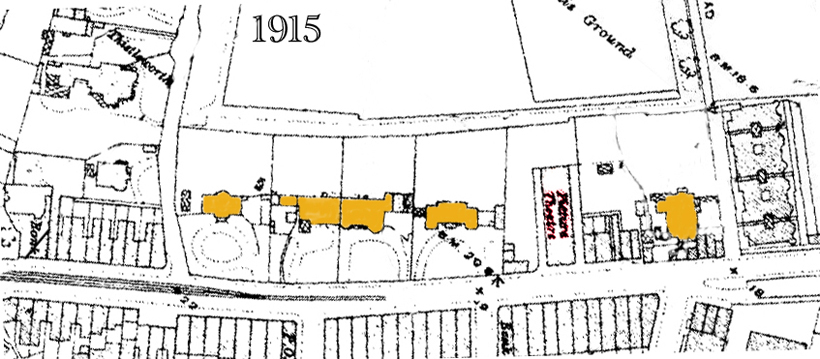
1915 First changes of management

The two Rate Book extracts from 1915 show the occupier as Thomas Cavill Vince who had a variety agency in London. He is listed in the April book by October he has been replaced by H Ambrose Ltd.
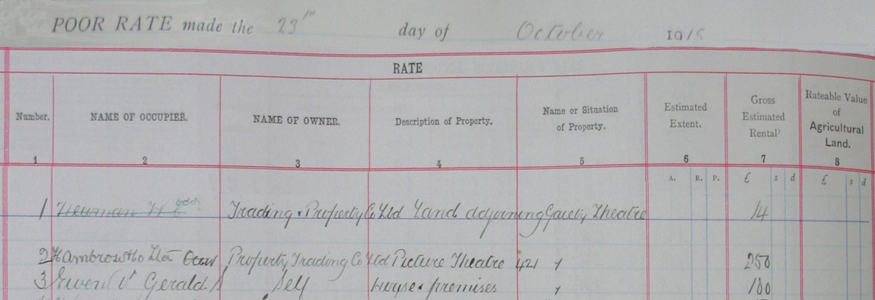

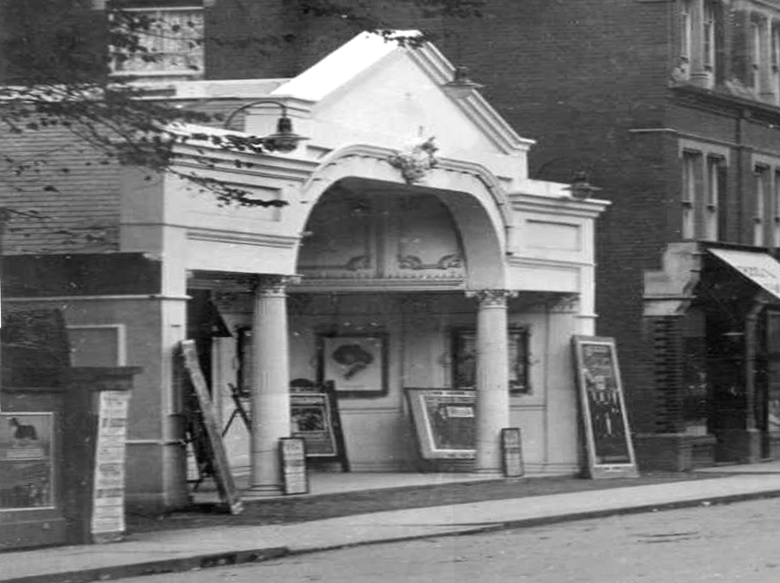
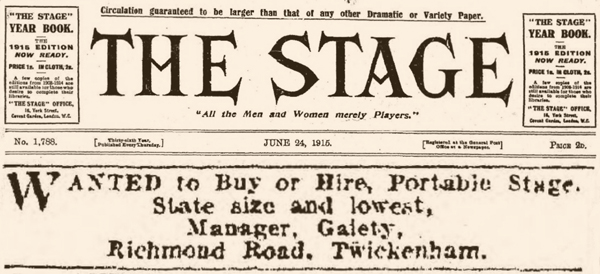
1915 Gaiety becomes The Albert Cinema
The Gaiety changed hands sometime between June and November 1915.The initial name of Albert Hall was soon changed to the Albert Cinema and was largely designed to serve the local Belgian community.
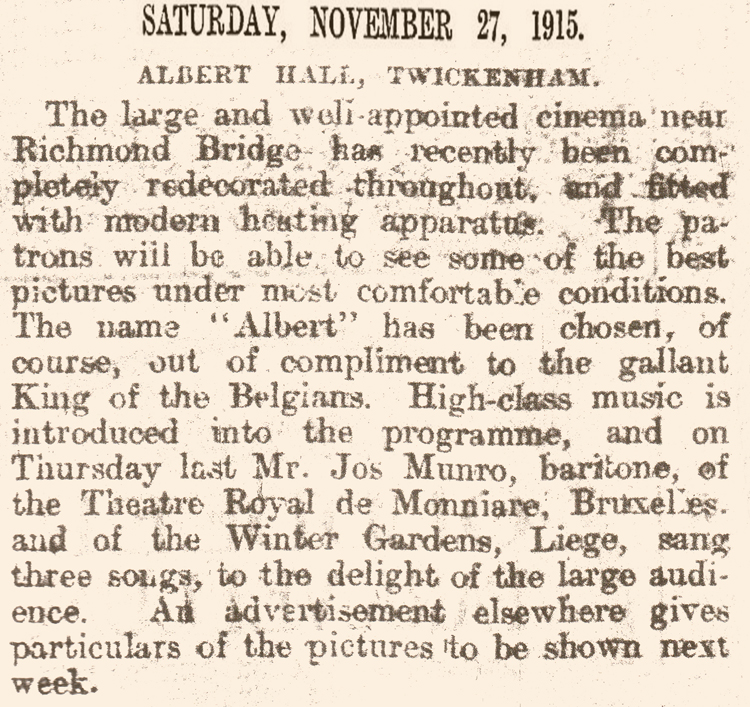
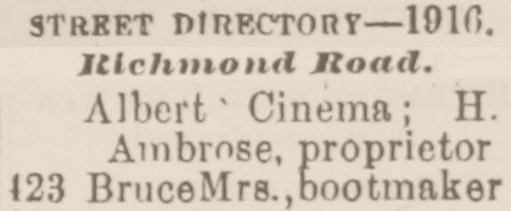
The above local directory from 1916 shows the proprietor as H Ambrose.We have not been able to trace who this was. One of the company directors was Colette Olga Touzeau who lived nearby in St Margarets Road.
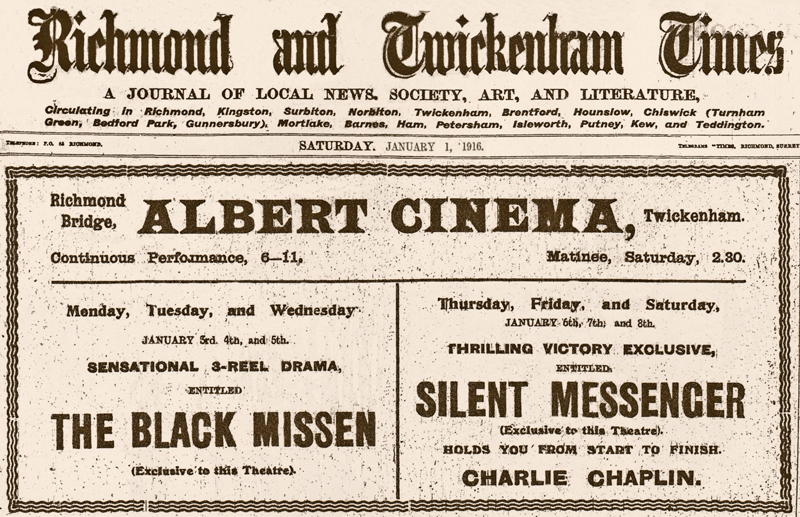
1916 June Albert becomes Gaiety Cinema
Following the name change to Albert, the theatre returned as the Gaiety Cinema in June 1916. The manager was mr A Ramsden who had been resident at the Teddington Picture House.
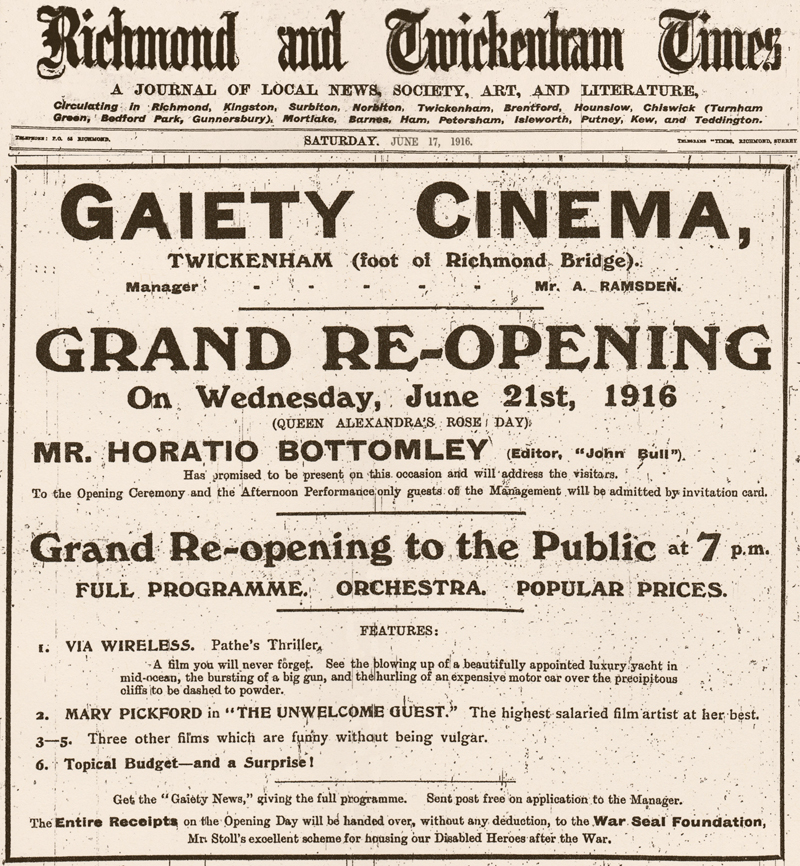
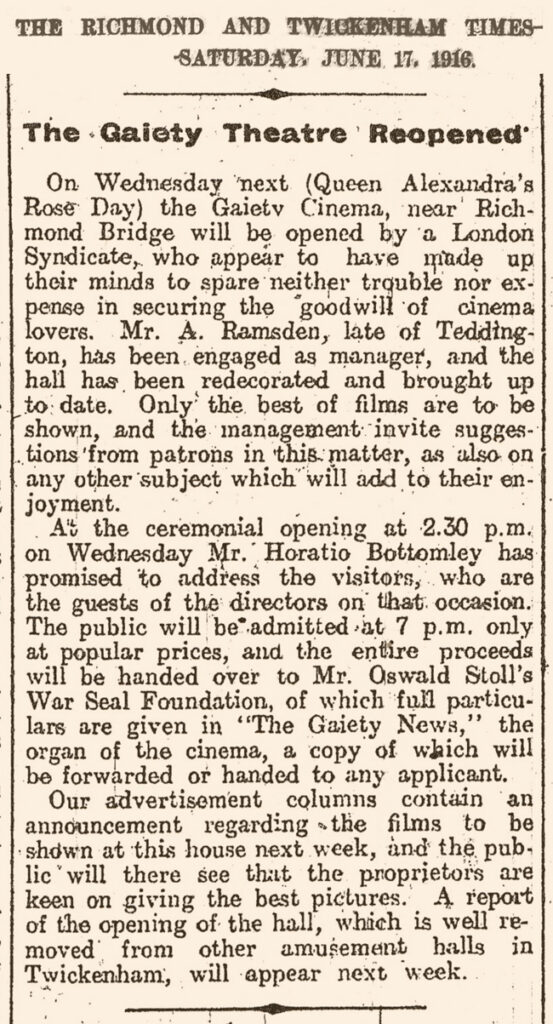
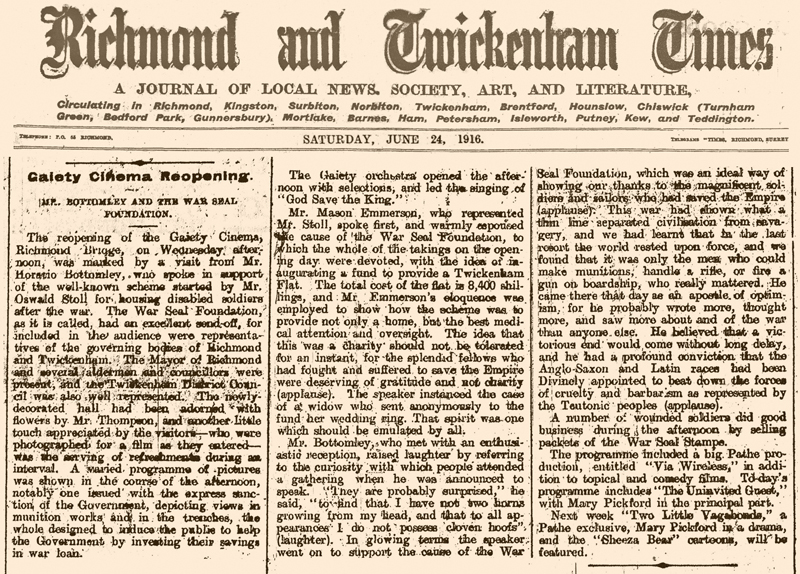
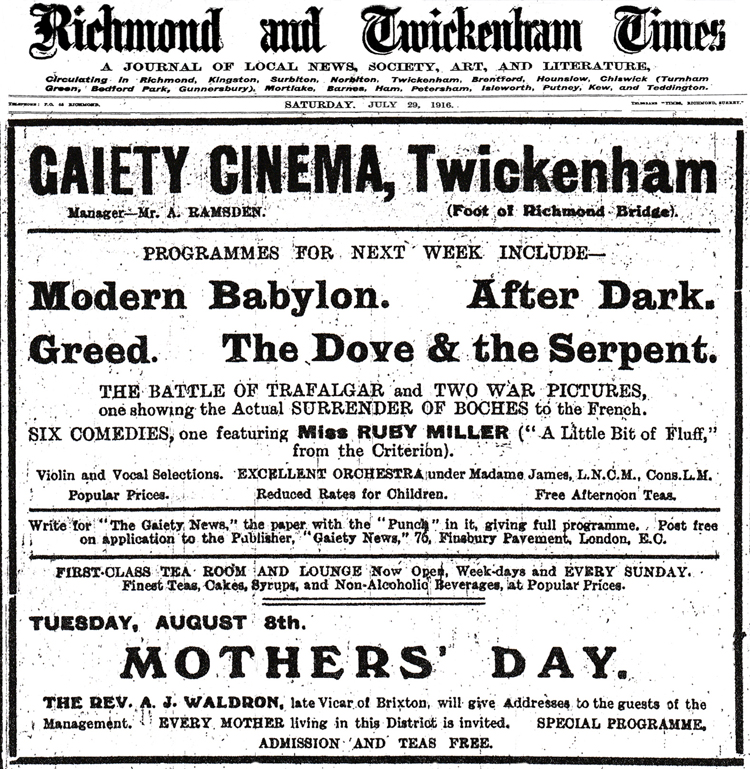
1917 Proprietress Miss Dorothy Bellew (actress)
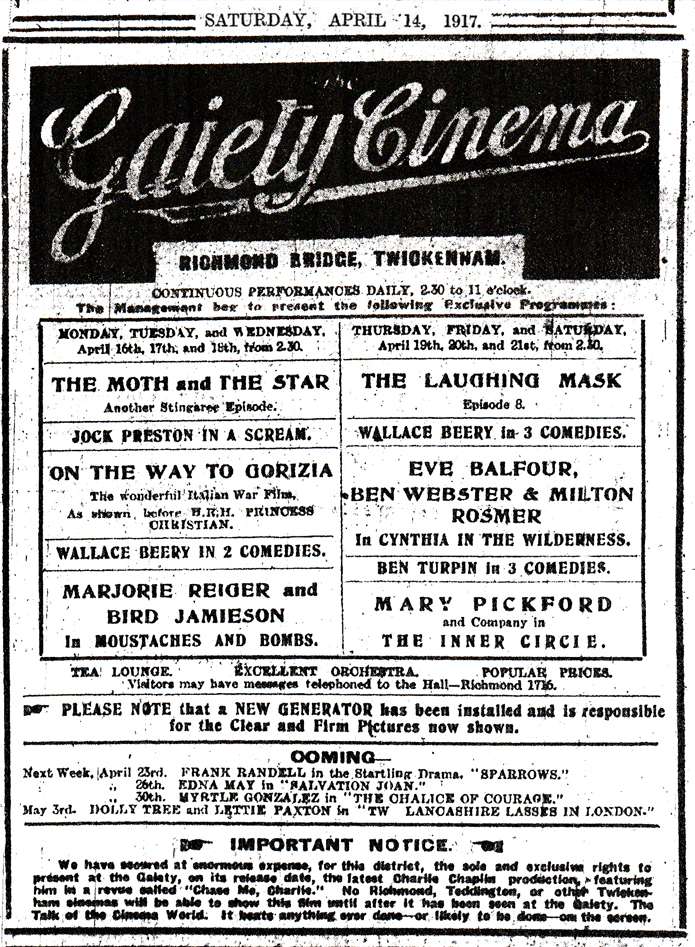
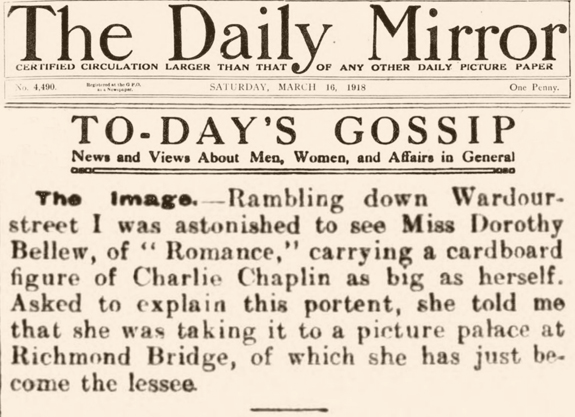
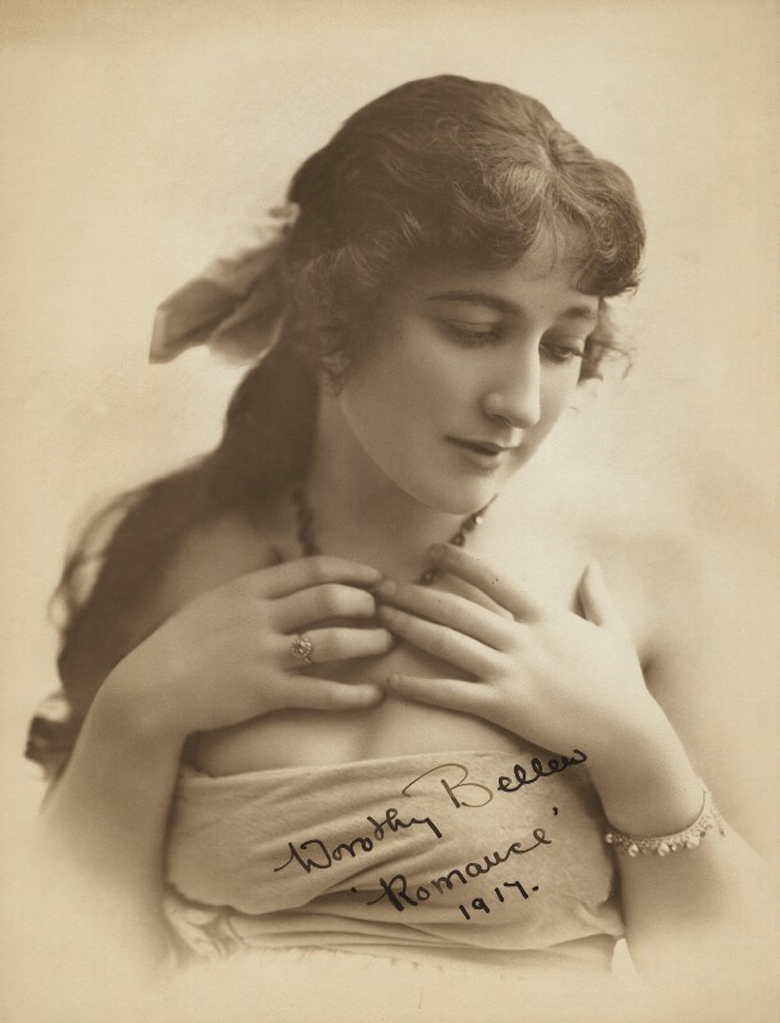
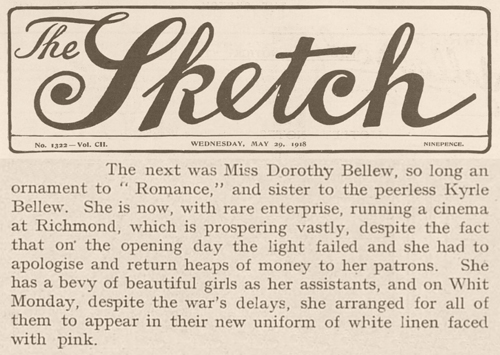
The actress Dorothy Bellew (born Dorothy Falck) was a very popular star of the theatre and the silent screen. She married Mr Stephen Slinger a theatre manager in 1920.
Her time at the Gaiety appears to have been short lived. After her marriage she and her husband were assossiated with a number of other cinemas in Chelmsford and Epping.
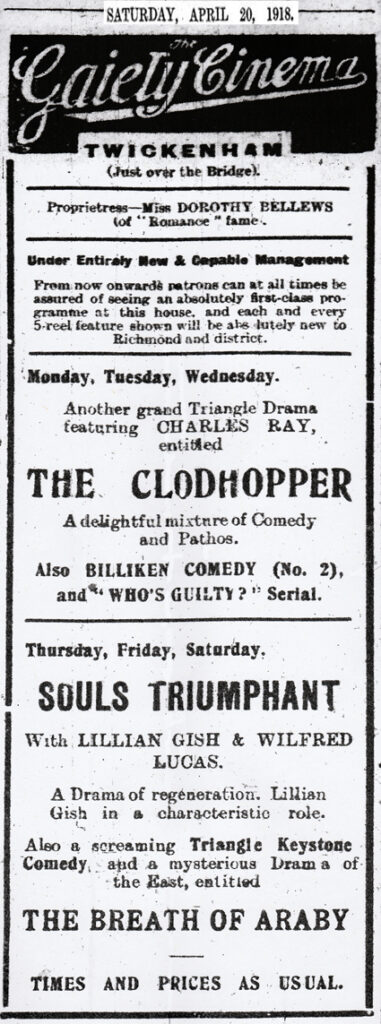
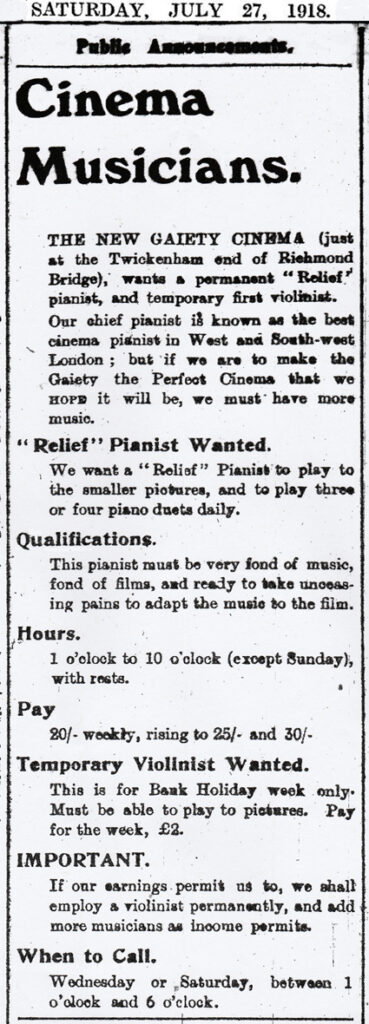
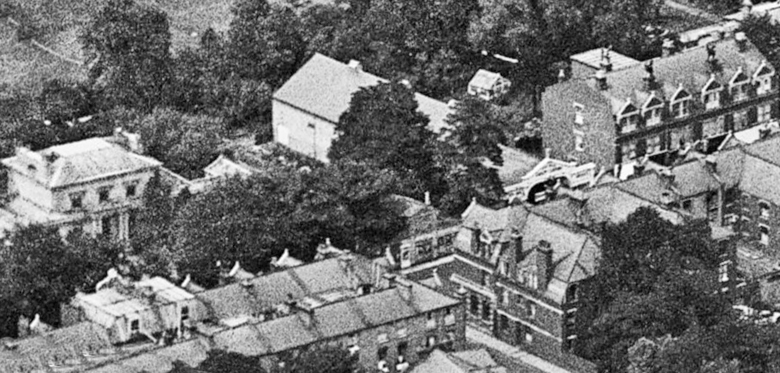
1918 New management
Following Dorothy Bellew’s tenure the Gaiety changed hands again. An advertisement from December mentions that the position of manager Mr Vincent had taken over from Mrs Lomas. We have not been able to trace either of these individuals.
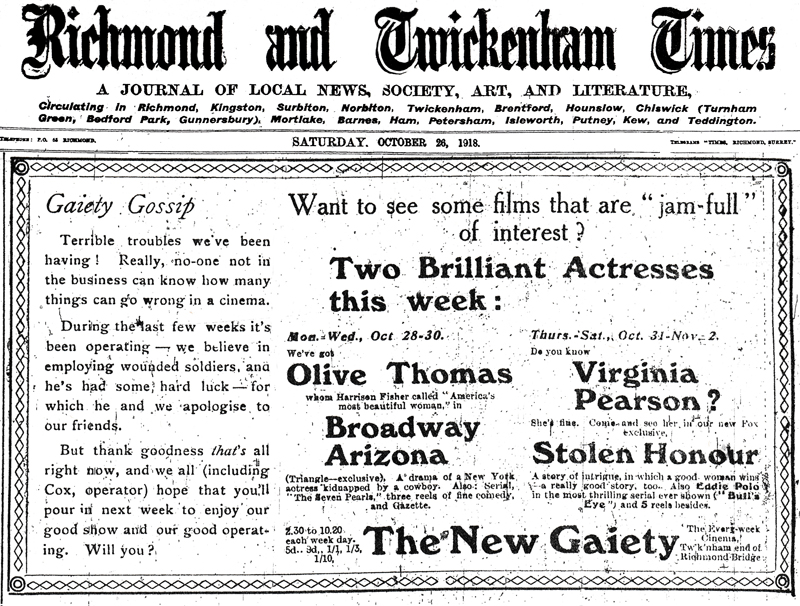
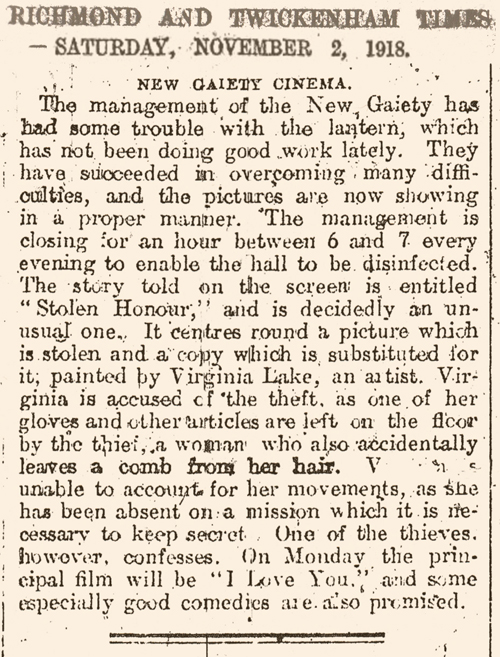
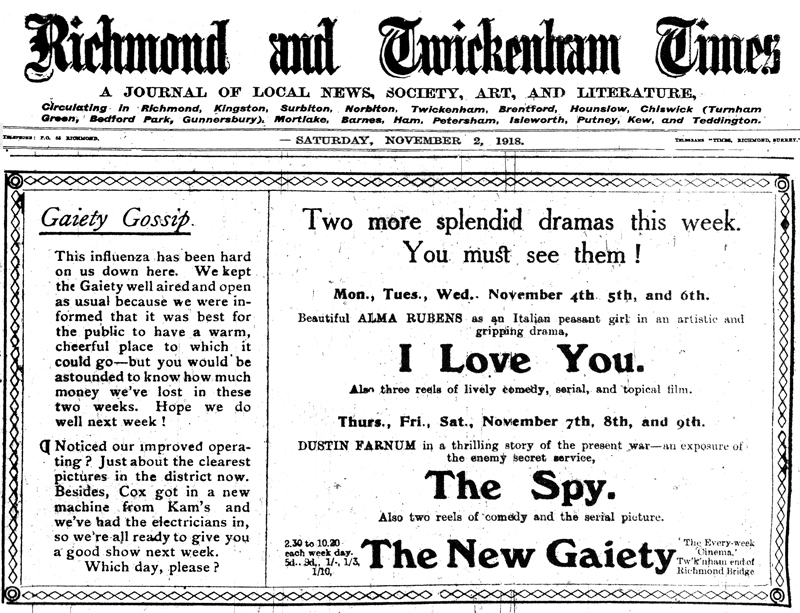
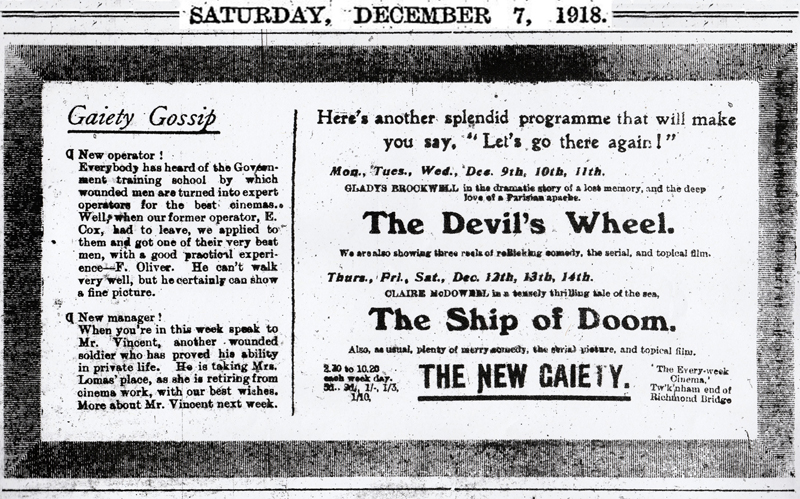
1919 new proprietor Mrs Madgley
Local directories show the proprietor as Mrs Madgley but we have been unable to trace her.
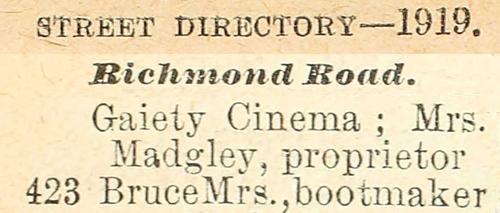
1919 new management Quality Kinema Ltd and leasees L.S Darling & Gordon Quick
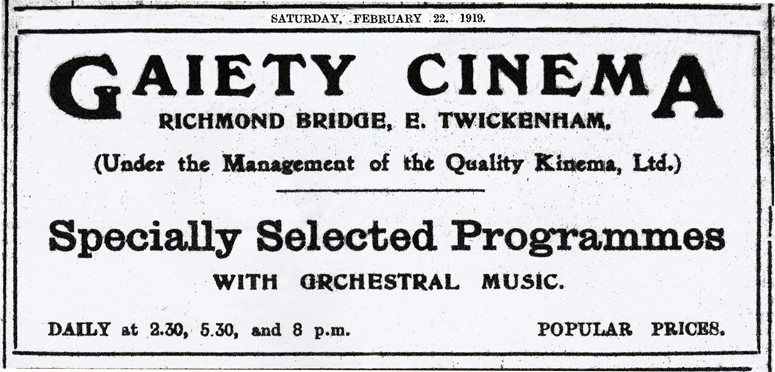
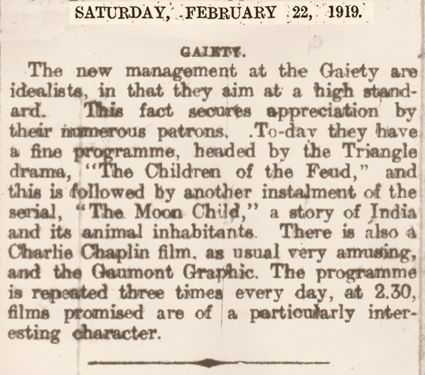
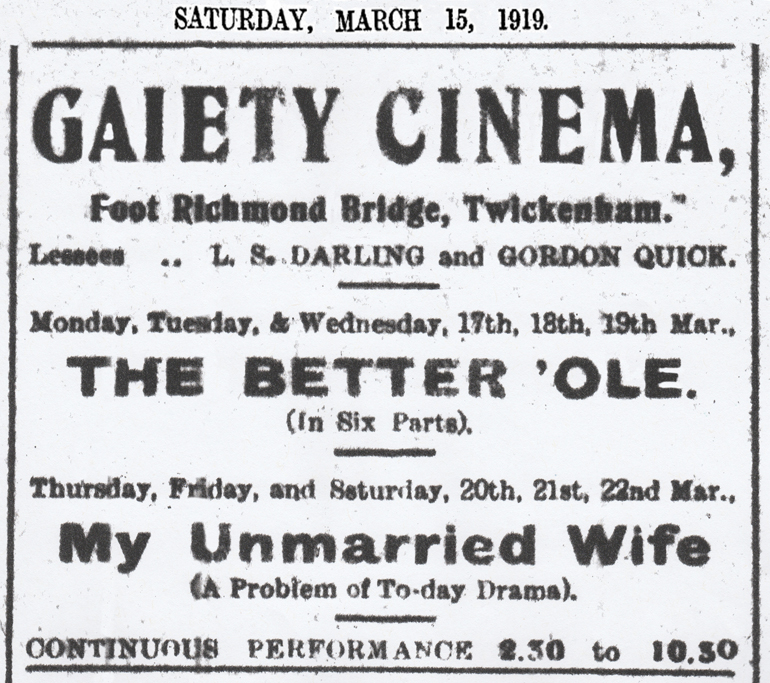
The leasees for the Gaiety in March 1919 was the partnership of Darling and Quick.
This shortlived business venture was between Manager Gordon Quick and Lewis Sidney Darling. L S Darling had been connected with the Premier Electric Theatre in Earlsfield Wandsworth. He married Florence Smith in 1912 and she was connected with the Bijou Theatre in South Street Isleworth.
Following their joint period at the Gaiety Gordon Quick left the business. Darling and his wife moved to the New Pavilion Cinema in Richmond befor moving to Kent.
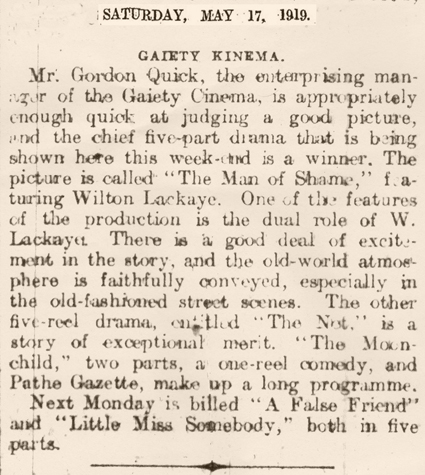
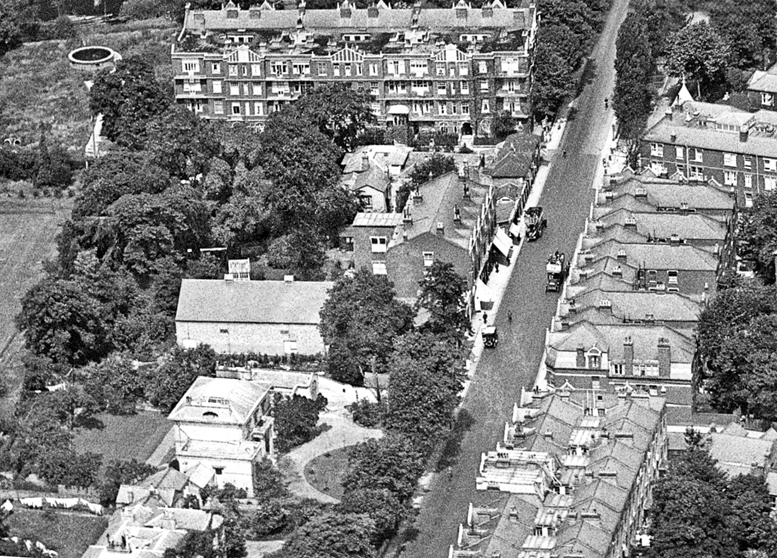
1919 July new proprietor William Collinson
A new proprietor named William Collinson had been employed at the Gaiety by July 1919. Like several of his predecessors his time at the Gaiety was limited as he had left during 1920. He became proprietor of the Palace Cinema in Walton on Thames which was later renamed the Regent Cinema.
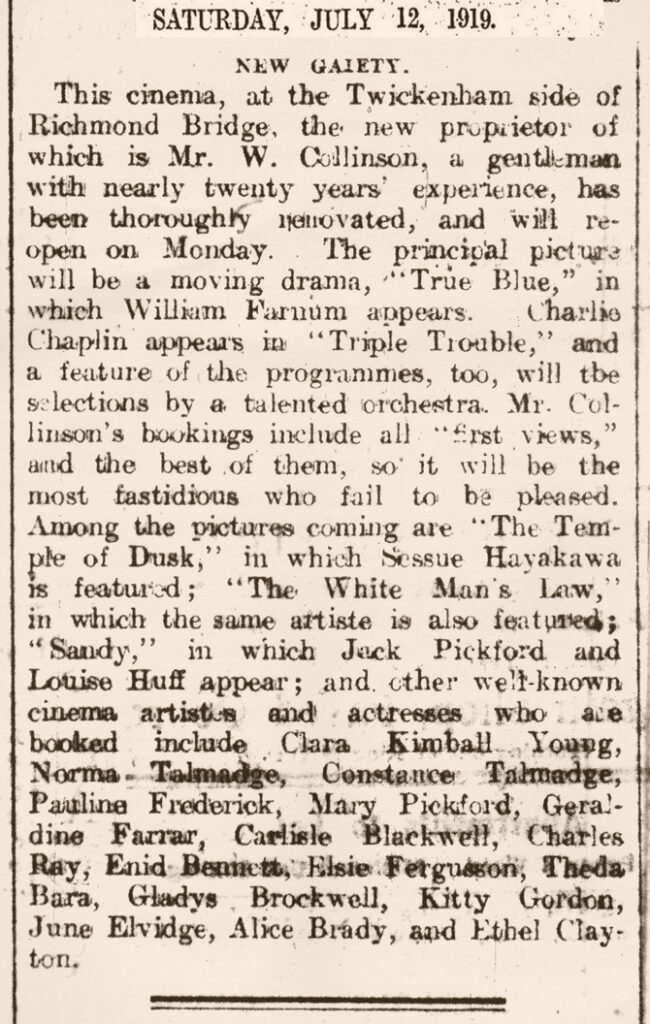
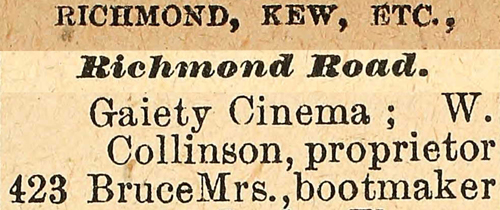
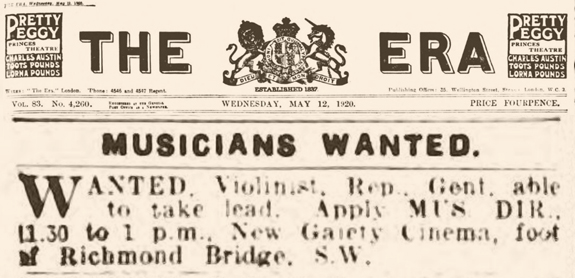
1920 new manager H. A. Warren
A new manager Harold Alfred Warren was at the Gaiety from mid 1920.
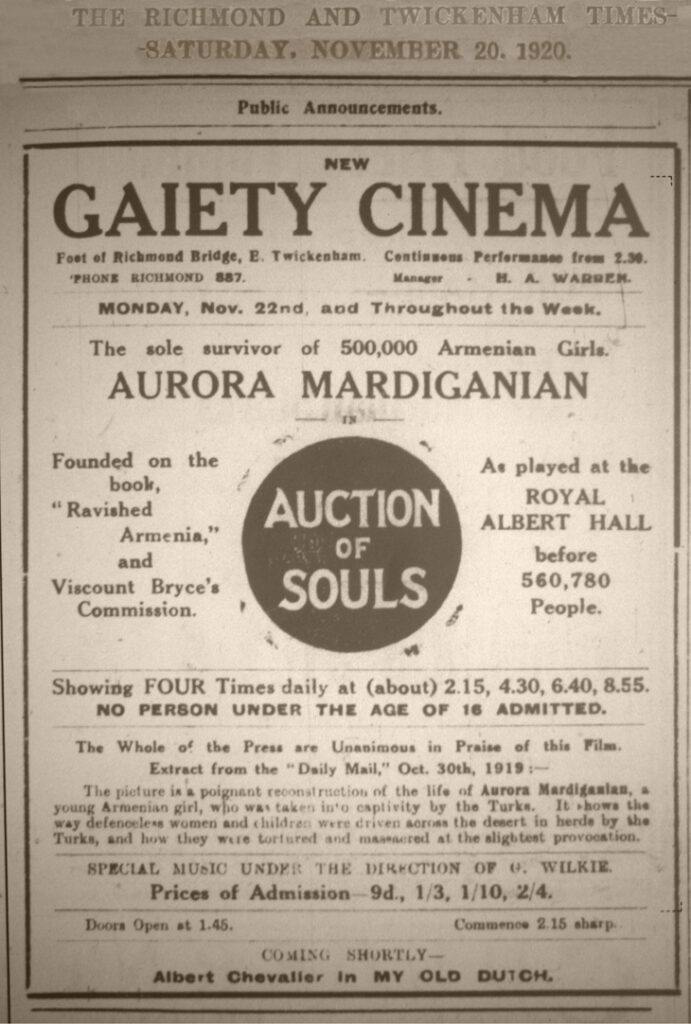
1921 owners Dubrowski & Michaels go to court
In 1921 the Gaiety showed a film entitled The Auction of Souls which had not been certified by The British Board of Film Censors. This resulted in the owners of The Gaiety being taken to court by the Local Authority who lost the case.
The case went to appeal to no avail.
Dubrowski and Michaels were the owners at this time. They were the partnership of two East London grocers. Micheal Micheals of 73 Brick Lane Spitalfields had married Dora Dubowski in 1904. She was the daughter of Barnett Dubowski who’s second wife was Annie Michaels. It is their son Abraham (brother of Dora) also a grocer in Dalston that went into partnership with his brother in law Micheals and as a sideline to their separate grocery businesses ventured into owning a cinema. It is not known whether the Gaiety was the only picture house they operated.
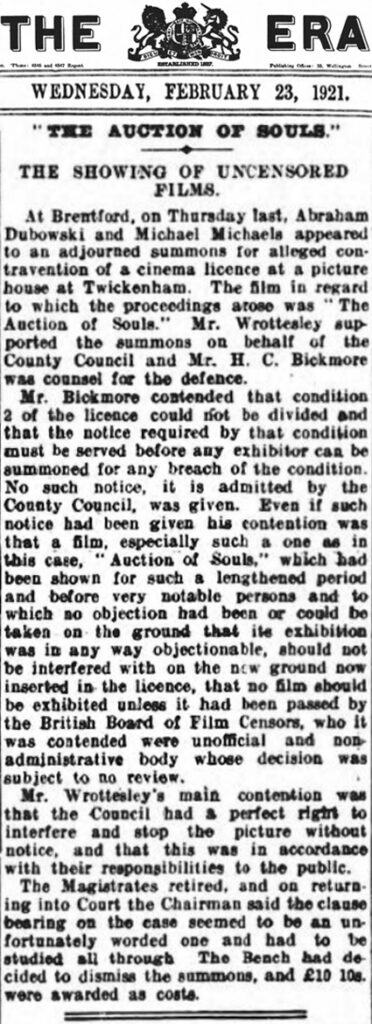

1921 owners Dubrowski & Michaels
The October 1921 Twickenham Council Rate Book shows the occupiers of the Gaiety as Dubowski with Michaels now deleted. We presume he was no longer connected to the Gaiety operation.

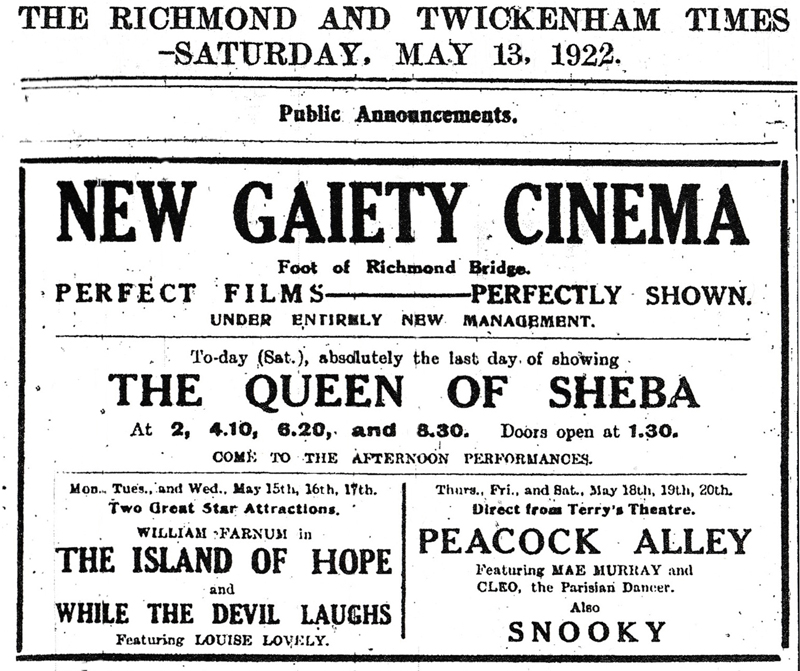
1922 New management Middlesex Kinemas Proprietor Alec Hyman Blackman
The management changed to Middlesex Kinemas Ltd in 1922. They were established by the Blackman Family of Whitechapel London. Philip Blackman and his son Alec were the principal directors. Blackman turned the fortunes of The Gaiety Around by incorporating live vauderville acts between the silent films. The selection of advertisements below show some of variety available.
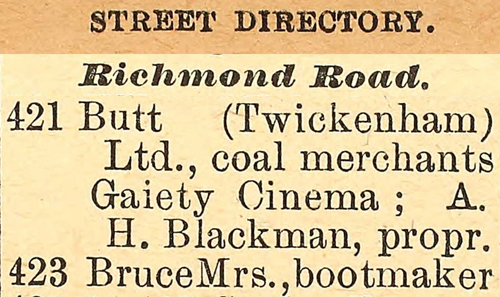
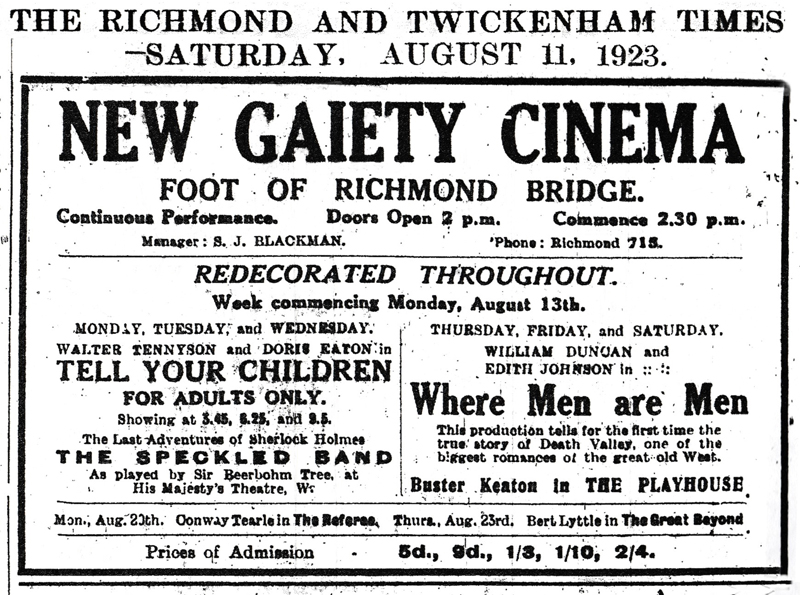
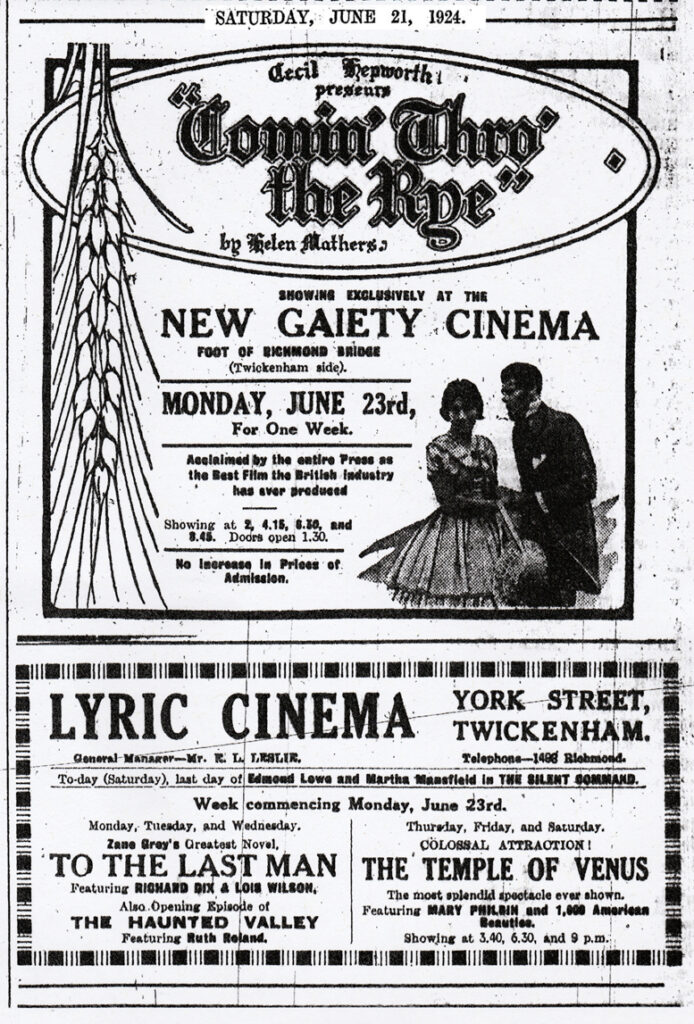
The Gaiety for a short time in 1925 showed live boxing.
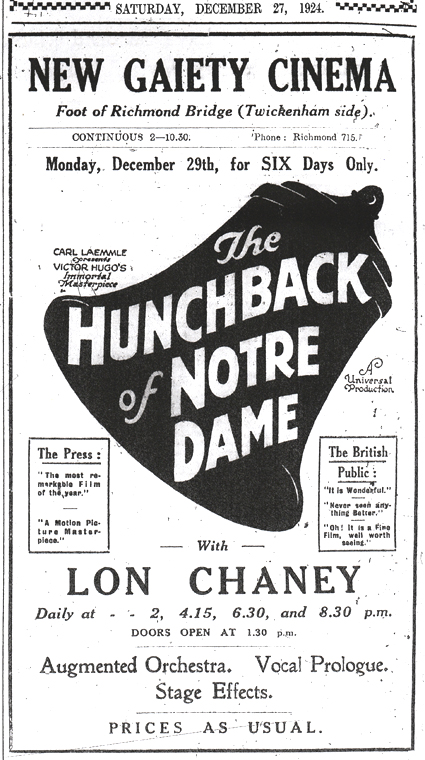
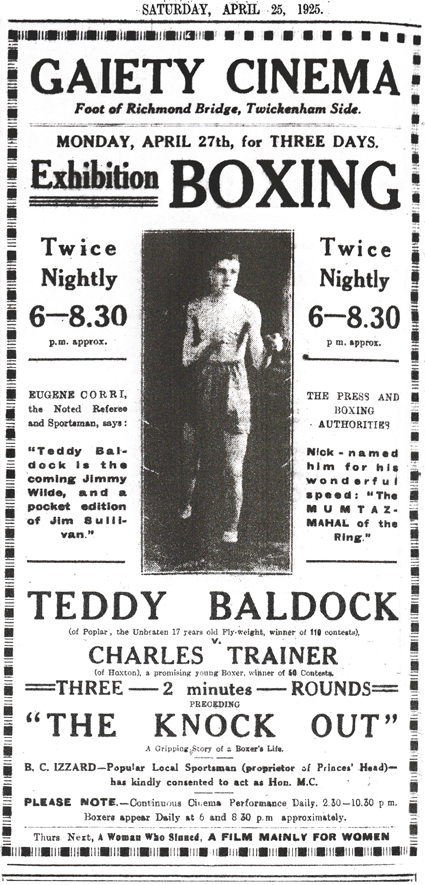
1925 New Gaiety Cinema
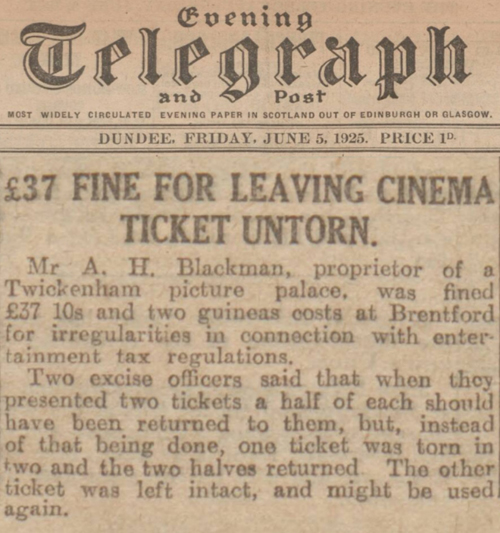
The Gaiety’s nearest competitor in Twickenham was The Lyric Cinema at the Twickenham end of Richmond Road. The advertisent below shows the New Gaiety and Lyric Cinema together with the Teddington Picture and Vaudeville House (which was managed by Middlesex Kinemas).
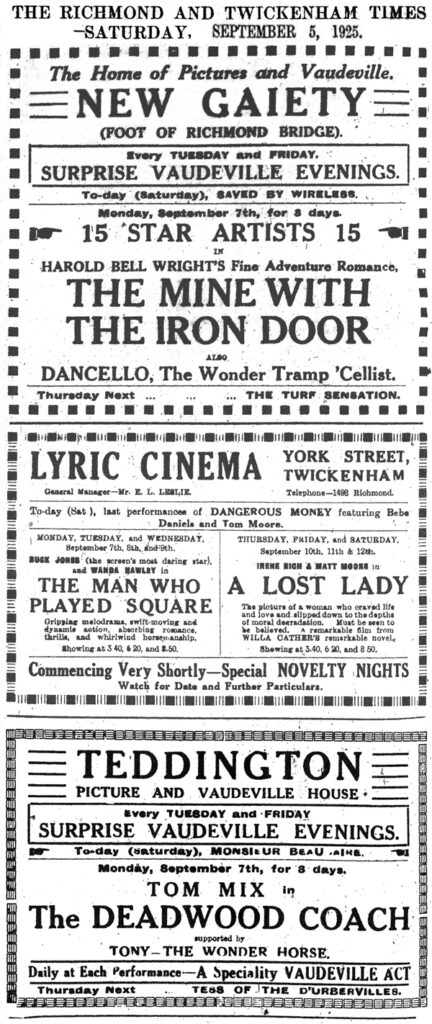
1925 New Gaiety Cinema

The Gaiety in the October 1925 rate book is shown above.
Below are two variety adverts for the Gaiety.
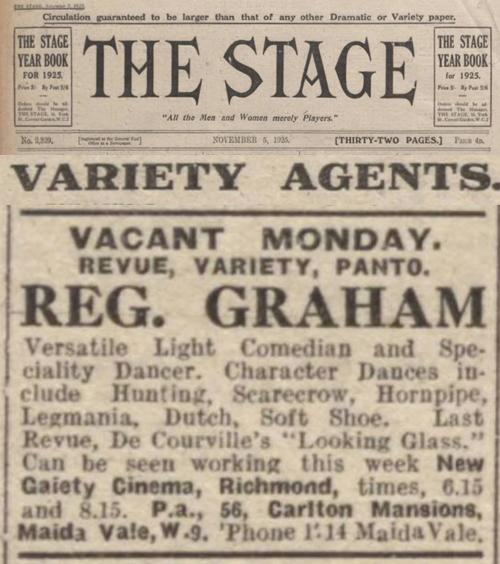
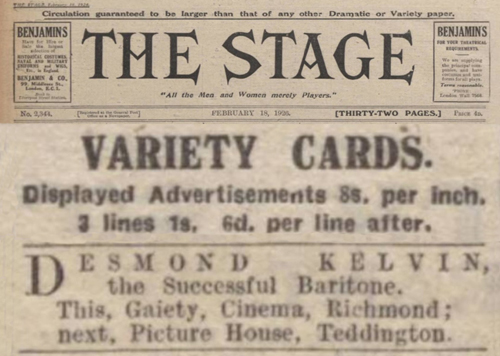
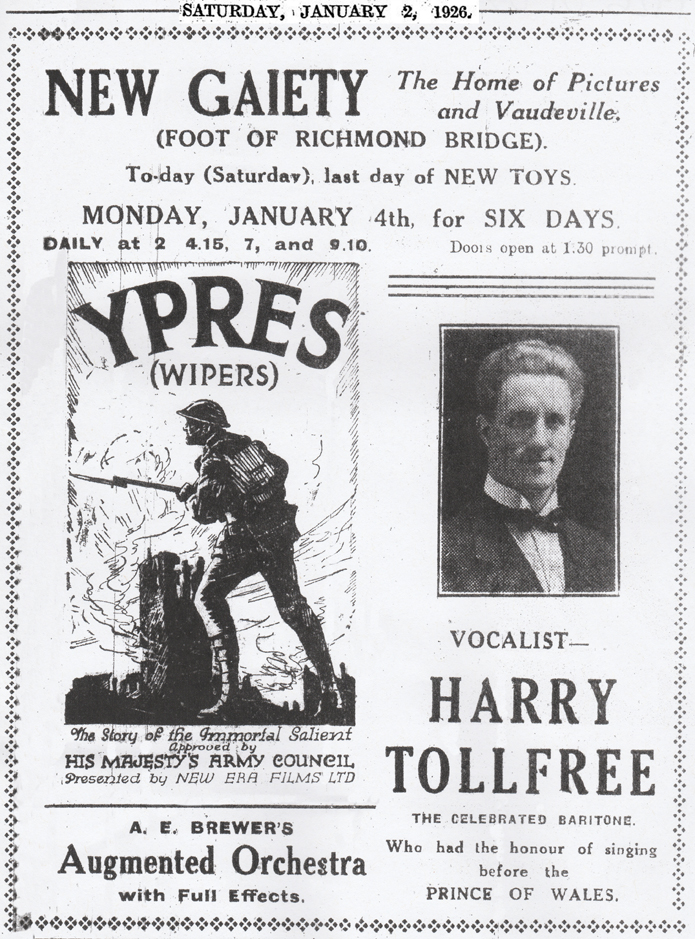
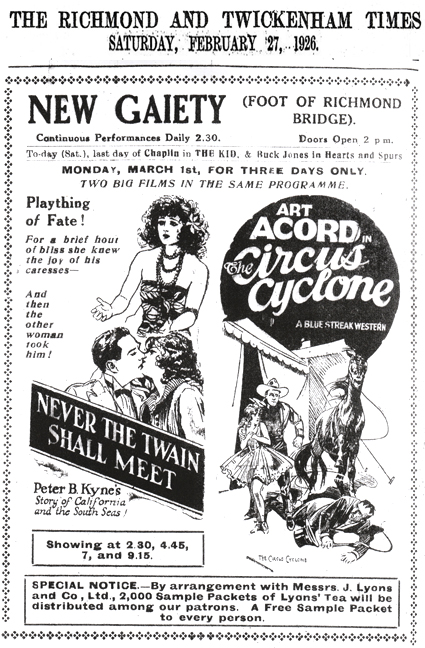
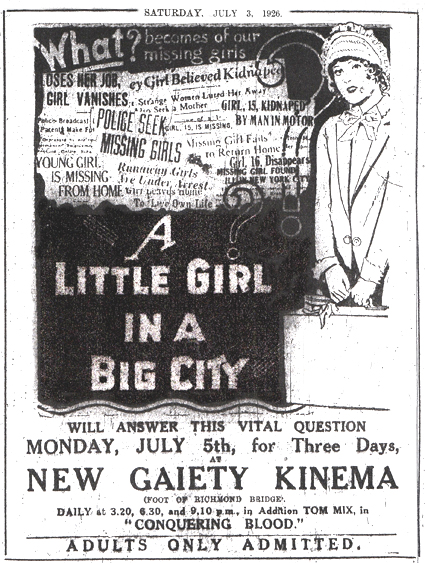
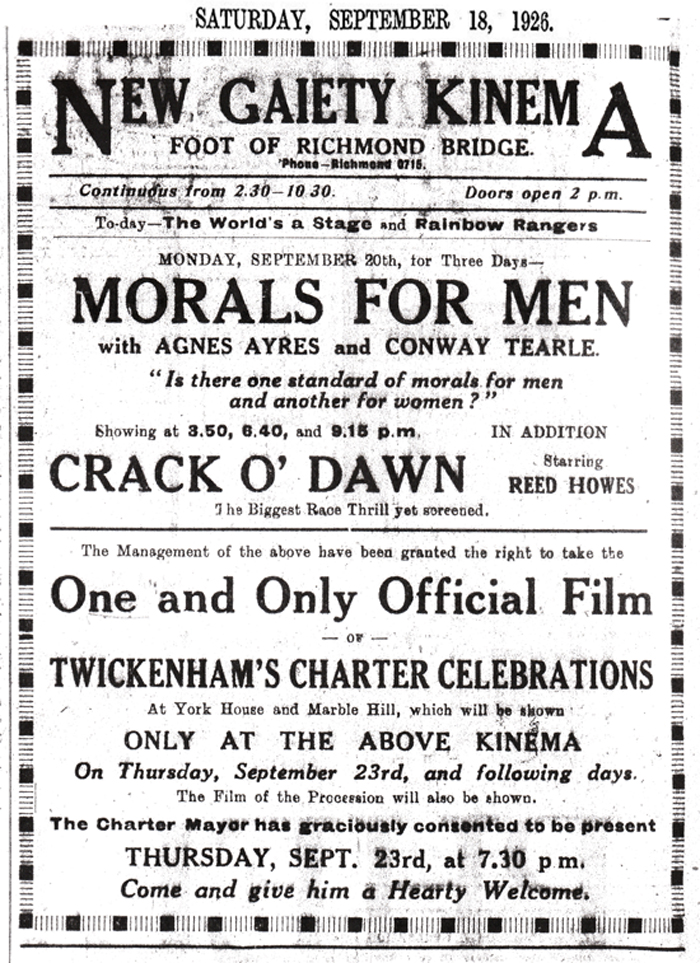
1927 New Gaiety Kinema
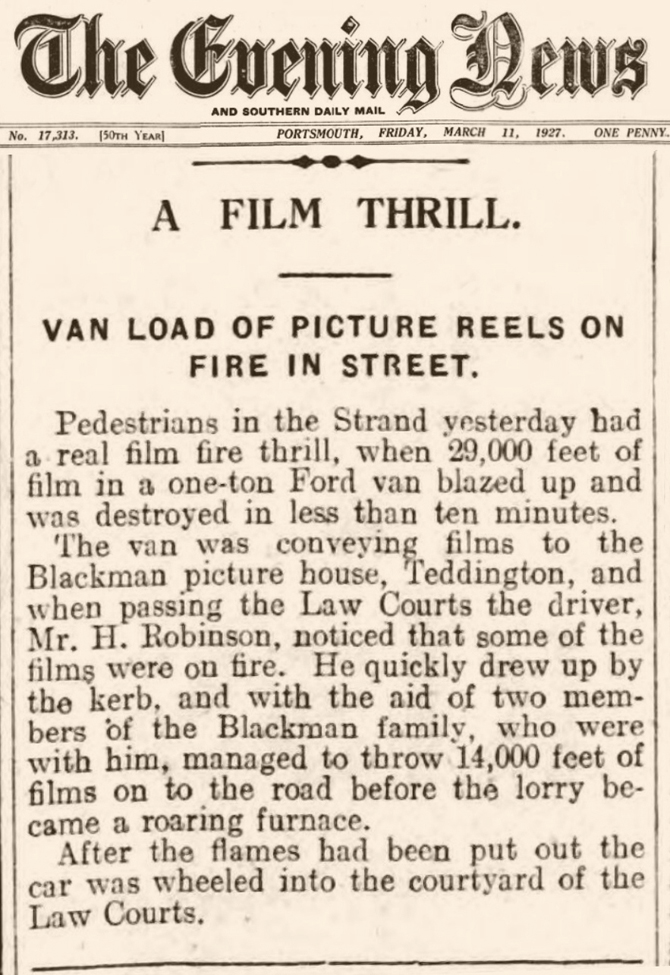
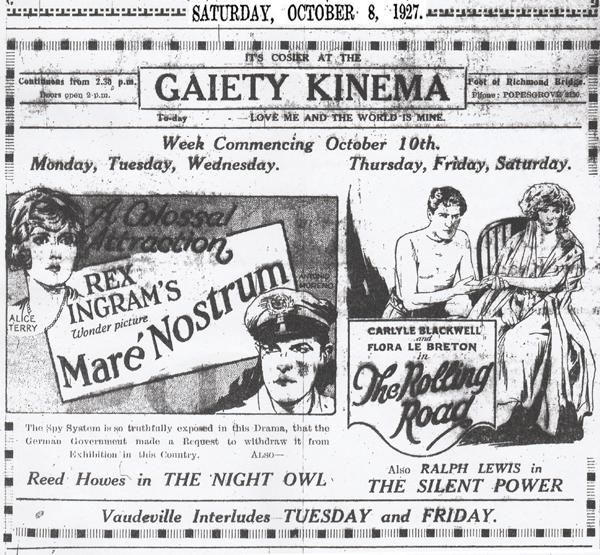
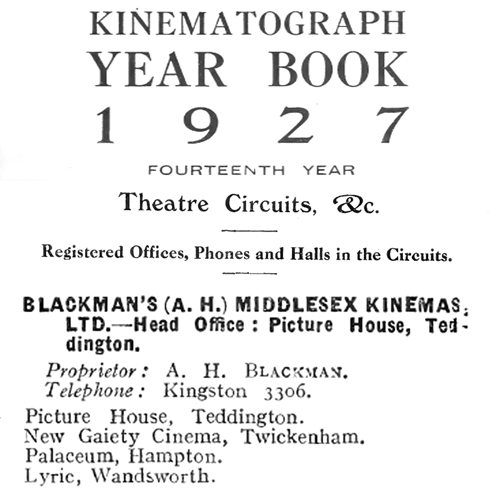
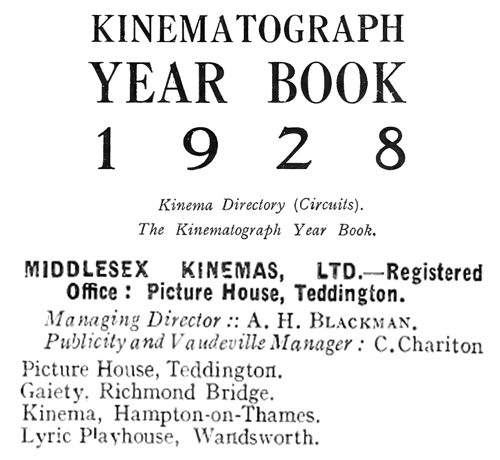
The Gaiety is listed in the two Kinematograph Year Books for 1927 and 1928.
The advert below (right) shows the Gaiety Kinema with its usual mix of silent films and variety acts. Also shown is an advert for Twickenham’s latest cinema the New Kinema De Luxe which had just opened directly next door to The Lyric. Being much larger with far better facilities The Lyric’s future was doubtful.
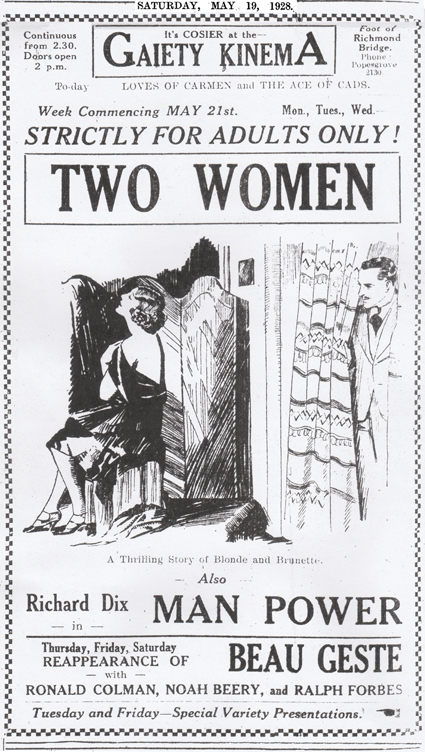
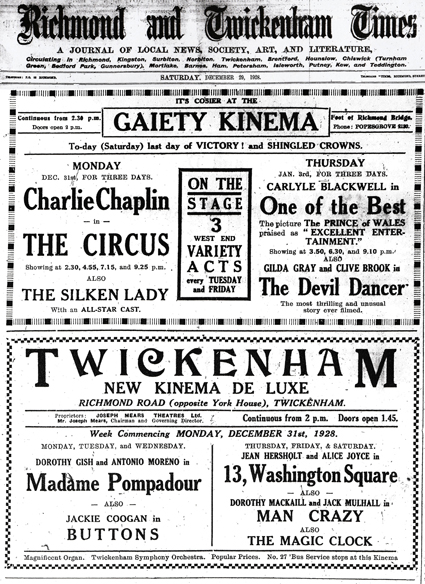
1929 Gaiety Kinema Talkies arrive
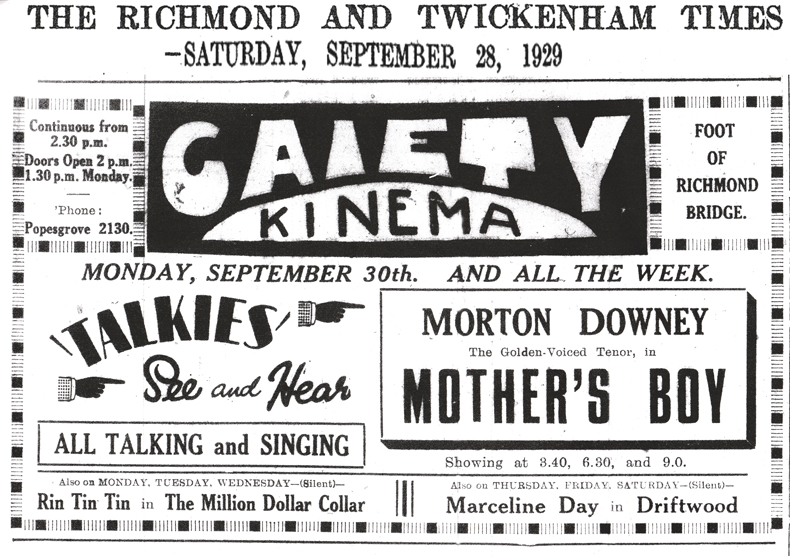
The Gaiety Kinema by 1929 was losing out to nearby competition and as an attempt to keep patrons they installed apparatus for the audience to experience the new Talkies.
Unfortunately this was seen as too little too late as much larger purpose built cinemas had recently been built in Richmond and Twickenham.
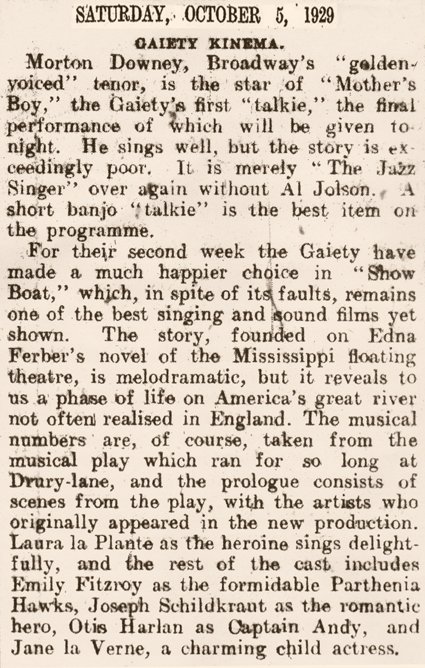
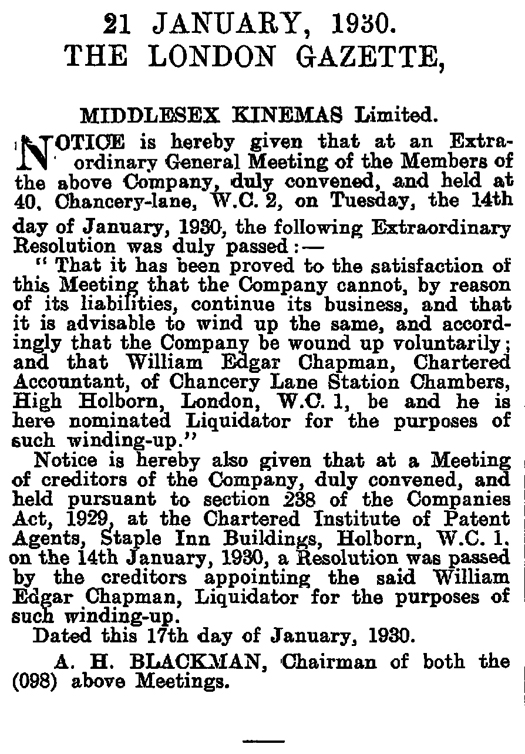
1930 Gaiety Kinema Closes
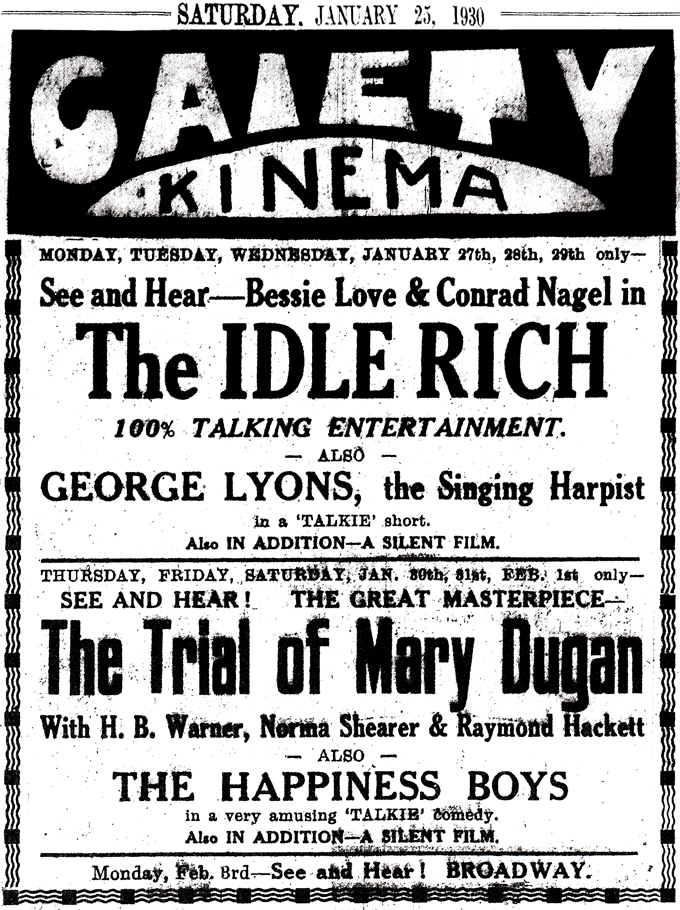
The Gaiety advertised one of it’s last films in early February 1930 and by 28th March the doors had closed and the cinema contents were being auctioned Middlesex Kinemas were in liquidation as per statement of account below.
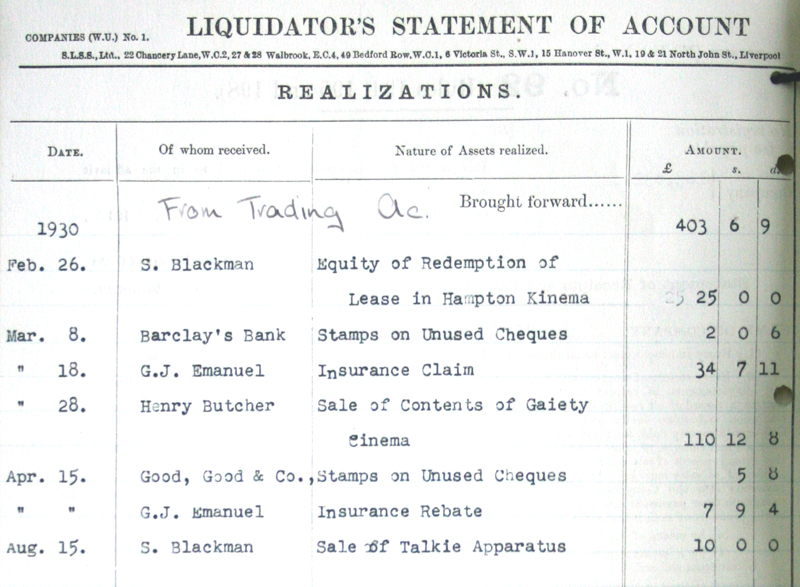
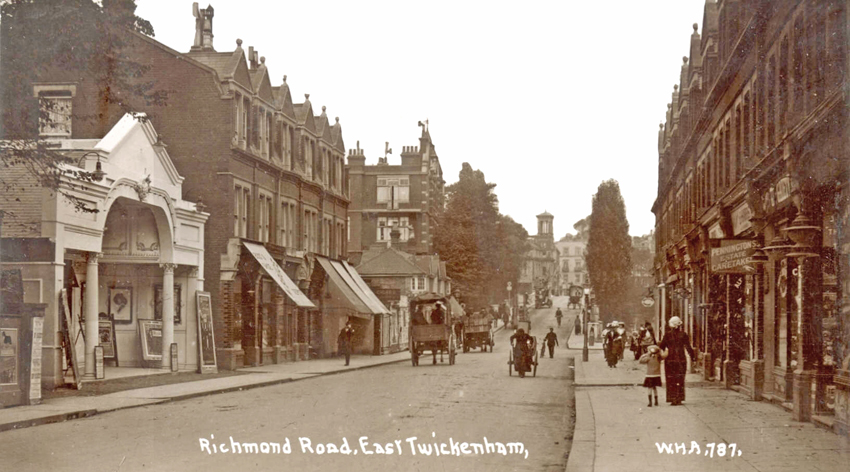
1931 Gaiety becomes Temperance Billiard Hall
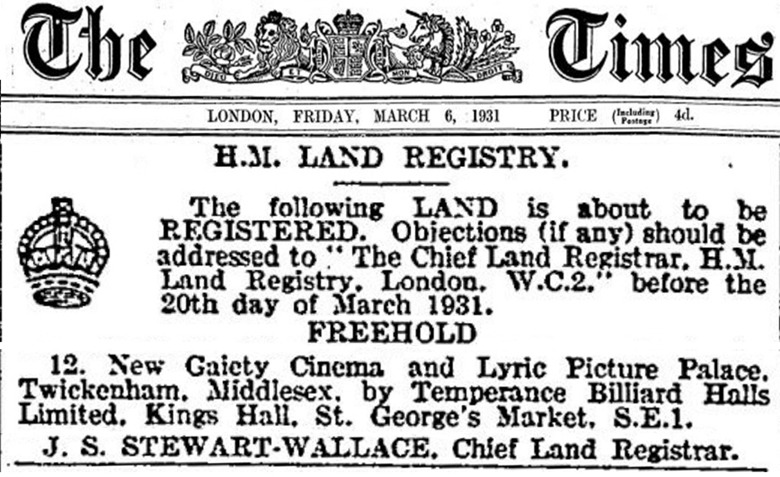
The Gaiety Cinema with it’s old competitor The Lyric in Twickenham were both now closed as picture houses and both sold independantly.
The Gaiety and Lyric were constructed around the same time and were internally very similar. With buildings more appropriate for a village hall than a cinema they were often known as “flea pits” and were unable to compete with the modern designs being built.
A new use for both these properties was the conversion of the picture house to a billiard room. A company that had had much success in this area were The Temperance Billiard Halls. They initially built purpose built halls in Manchester and the local area, and then in London.
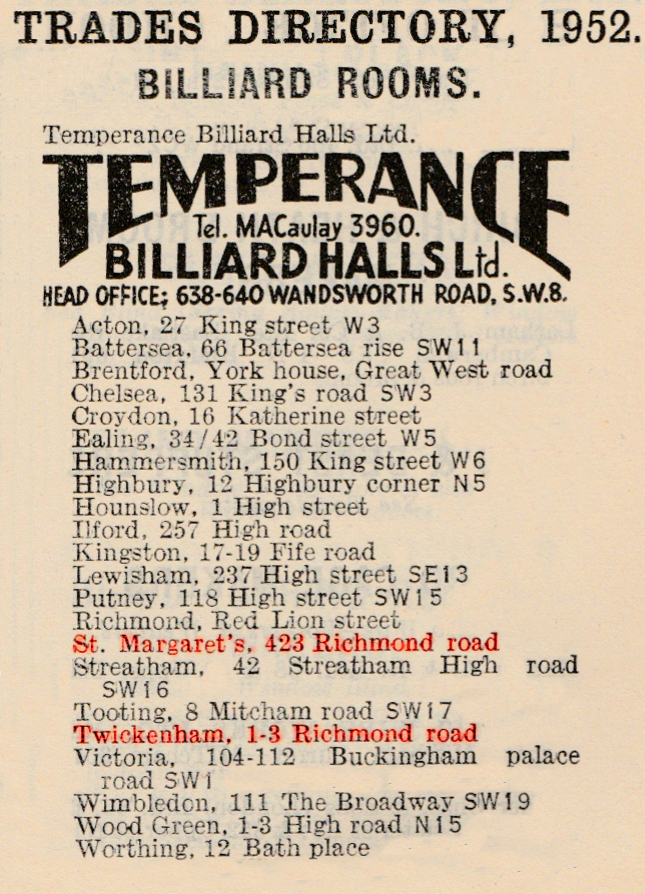
The Gaiety was now known as the the St Margaret’s Temperance Billiard Hall and the 1952 London Trades Directory shows the other billiard halls in the immediate area. The foyer of the Gaiety was refashioned and remained largely unchanged until the billiard hall closed around 1954. TBH sold off all it’s other sites by 1964. In 1955 there was a planning application to use the former cinema/billiard hall for the assembly of plastic toys. In 1964 a licensed betting shop in one of the shops facing the road. The other which had for many years been the Gaiety Snack Bar became an estate agent.
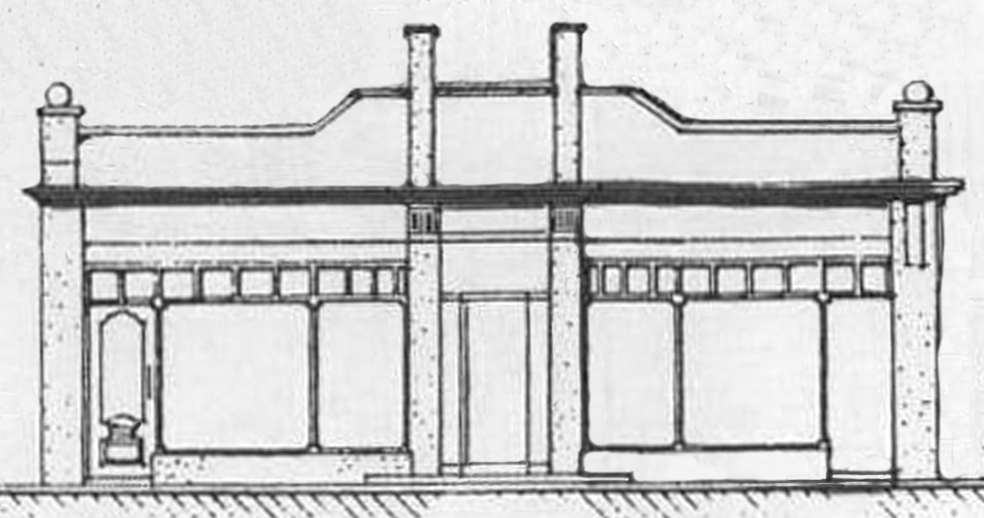
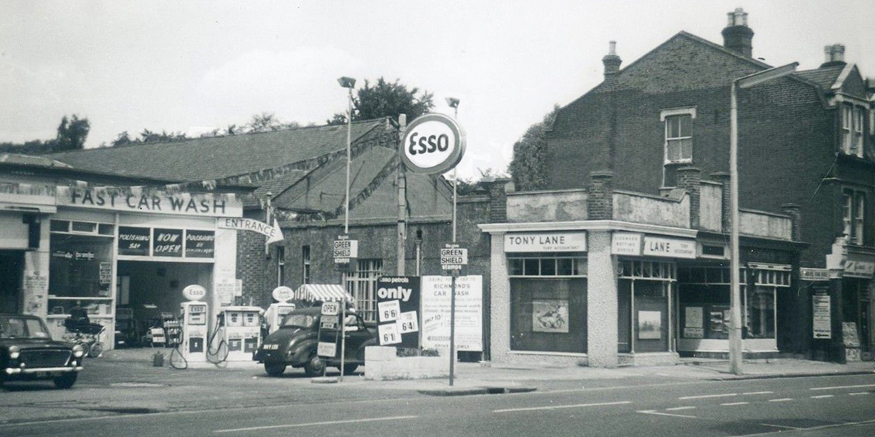
The Gaiety building about 1965 is shown above. Below is one of the only surviving features of the property. It is a tiled mosaic of the Temperance Billiard Hall initials which are still in the foyer.
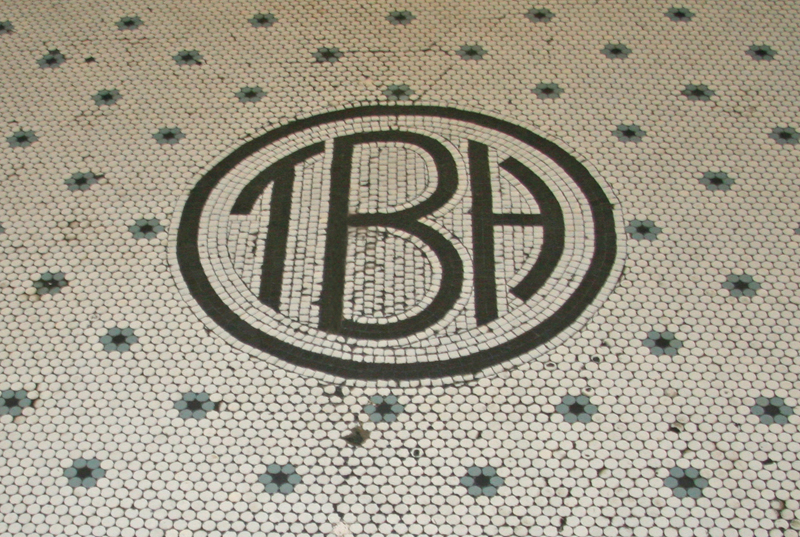
There was a proposal to demolish the property in 1983 and erect a four storey office building but this was rejected. An extension above the foyer had been made and the property was now known as Richmond Bridge House, and is used as serviced office accommodation.
The old Gaiety Picture House still exists and is shown present day below.
